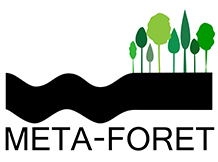2/ High density experiments : frequency distribution disorder (on-site disorder)
In a second step, we will move from ordered to disordered metamaterials. In these types of composite media, it was shown that a local modification can be realized without altering the properties of the rest of the metamaterial, at the scale of the unit cell. Such local modifications can be realized by inserting unit cells whose resonant frequencies lie in the bandgap of the otherwise unmodified metamaterial. This allows to realize cavities, waveguides, or filters that can confine and manipulate waves at deeply subwavelength scale. Yet this also means that a defect in a metamaterial can trap waves for very long times and hence concentrate a very large amount of energy. Such a mechanism could have potentially disastrous consequences, for instance for a building reacting like a defect in a city subject to an earthquake.
To study these aspects, we will design and study experimentally metamaterials that are subwavelength scaled and spatially periodic using the same kind of setup and apparatus. We will characterize the threshold of disorder needed to evolve from a disordered metamaterial presenting defect states to one governed mainly by wave scattering. We expect such threshold to be dependent of properties of the unit cell such as the resonance quality factor. We will particularly focus on the parameter ranges where defect modes emerge within the metamaterial, and give potential paths in order to design systems that avoid these kind of potentially dangerous physical objects.
Updated on 29 septembre 2016


